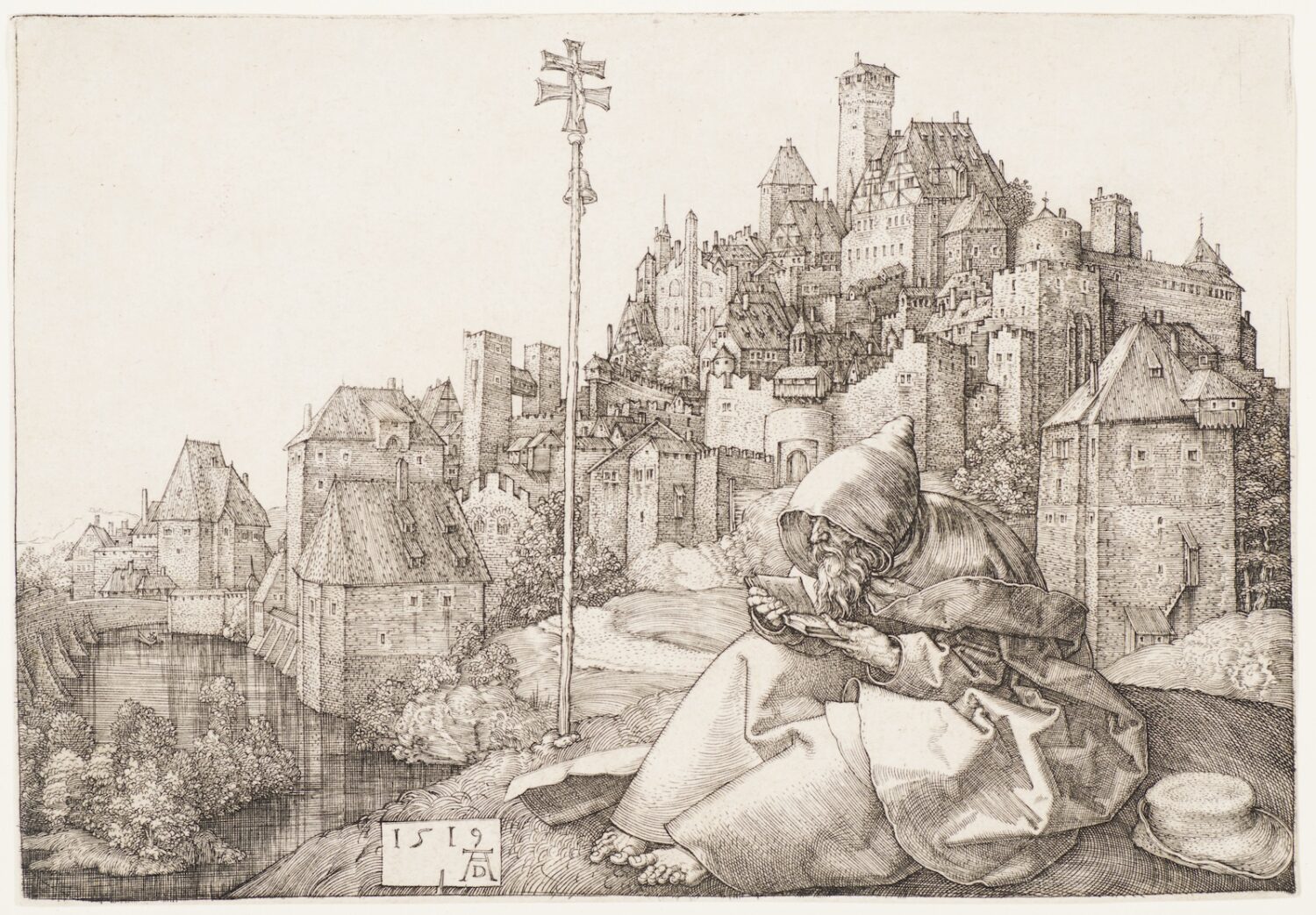The brilliant and versatile German Renaissance artist Albrecht Dürer (1471–1528) lived in the prosperous city of Nuremberg and is renowned as one of the finest printmakers of all time. This exhibition of more than one hundred engravings, etchings, and woodcuts spans almost the entirety of Dürer’s prolific career, beginning with some of the earliest examples he made as a young master and ending with his treatise on human proportions, published by his wife, Agnes, shortly after his death. Works by Dürer’s predecessors and followers contextualize his career and show how he revolutionized Renaissance printmaking.
Dürer was an artist of extraordinary ambition. He trained initially as a goldsmith and then as a painter, but quickly recognized and seized upon the enormous potential of prints—still a new medium in Europe—to showcase his virtuosity and spread his fame. Starting in the fifteenth century, mass-produced pictures on paper were inexpensive and easy to acquire at markets and fairs, putting art within reach for more people than ever before. Dürer inscribed his prints with his initials—AD, stylized so that the D is nestled beneath the crossbar of the A—to proclaim his authorship and ingenuity. By 1500, while still in his twenties, he had become the most well-known artist in Europe. Throughout his career, Dürer traveled, most notably to Venice and Antwerp, and brought back the latest artistic ideas to Nuremberg. He was the first German artist to depict ancient mythological scenes in his prints. Dürer also befriended the circle of humanist scholars in Nuremberg who were deeply engaged in the study of ancient literature. Many of his prints were made with a sophisticated audience in mind. Dürer’s writings show that he was sympathetic to the religious reform movements of his time. He expressed interest in the ideas of Martin Luther (1483–1546), whose Ninety-Five Theses, posted in 1517, challenged the Roman Catholic Church. The artist knew Erasmus of Rotterdam (1466–1536), another religious reformer, who praised Dürer as the “Apelles of the Black Line.”
Highlights of our exhibition include woodcuts from the Apocalypse, the artist’s early masterpiece, which was celebrated for its dynamic and harrowing illustrations of the end of time; Adam and Eve, one of the most famous depictions of the first man and woman in the history of art; and all three of Dürer’s Master Engravings: Knight, Death, and the Devil; Melencolia I; and St. Jerome in His Study.


